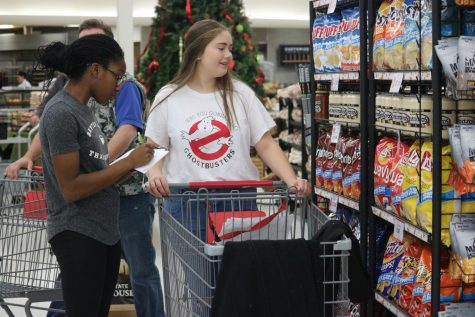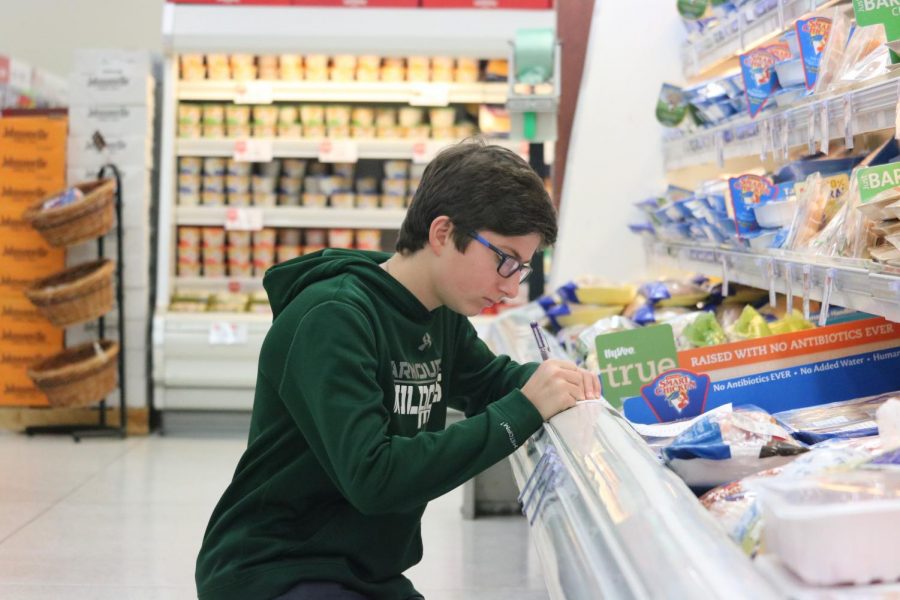Personal Finance class learns to budget
Personal Finance students take a trip to Hy-Vee to learn to manage finance
December 10, 2018
 On November 14th, to simulate the budgeting of groceries, business teacher Kendra Thunker took her Personal Finance students to Hy-Vee. With grocery lists in hand, the students were prepared to buy all necessary items and stay within their allotted budget.
On November 14th, to simulate the budgeting of groceries, business teacher Kendra Thunker took her Personal Finance students to Hy-Vee. With grocery lists in hand, the students were prepared to buy all necessary items and stay within their allotted budget.
After attendance was taken, the class took the five minute walk across Q Street where they were given time to gather their grocery items based on a budgeting sheet given from Thunker. Each list was based on a different real-life scenario and contained everyday items such as milk, bread, fruits and vegetables, frozen meals, etc., that students needed to buy. Keeping in mind the costs of different brands of the same item was key so students didn’t overspend.
“It was a little hard and stay away from name brands,” sophomore Julia Dugger said. “But Hy-Vee had other good options for us.”
Every list was dependent on what type of scenario they got. The scenario were like this, $40,000 with no dog, $45,000 with one dog, or $85,000 with two kids. According to the scenario they will get the list to use; each list contains items that are required for them. The items are listed to last for a week for every individual scenario.
“I had the scenario with two kids,” freshmen Paxton Dornbier said. “So it was hard to find the young items like baby food because that is expensive. Easy to find diapers and food and other items that were affordable.”
Shopping for groceries was just part this the budgeting simulation. Students were also required to purchase other sites such as cars, renting an apartment and other planning for other household expenses. Once again, planning out extra expenses was essential. Students that chose to buy an SUV had to allot more for gas expenses than students that opted for a sedan. Going over budget by even $.01 resulted in a five point deduction.
“This project is for students to understand how to budget,” business teacher Kendra Thunker said. “ Also, I wanted them to know how expensive life is… groceries, rent, bills, all of it.”
Within the unit, students learned about the website paycheckcity.com where they put in their salary given by Thunker and could see their take home pay after taxes were deducted. From that monthly net pay students figured out how much money they have to save towards all of the other expenses like groceries, car, apartment, insurance, and all the utilities. But before they pay for all their expenses they will have save ten percent of monthly net pay in the bank so it could be used towards any emergency happens.
In the end of the three day project students got to learn alot about budgeting and how to save money for their expenses.







